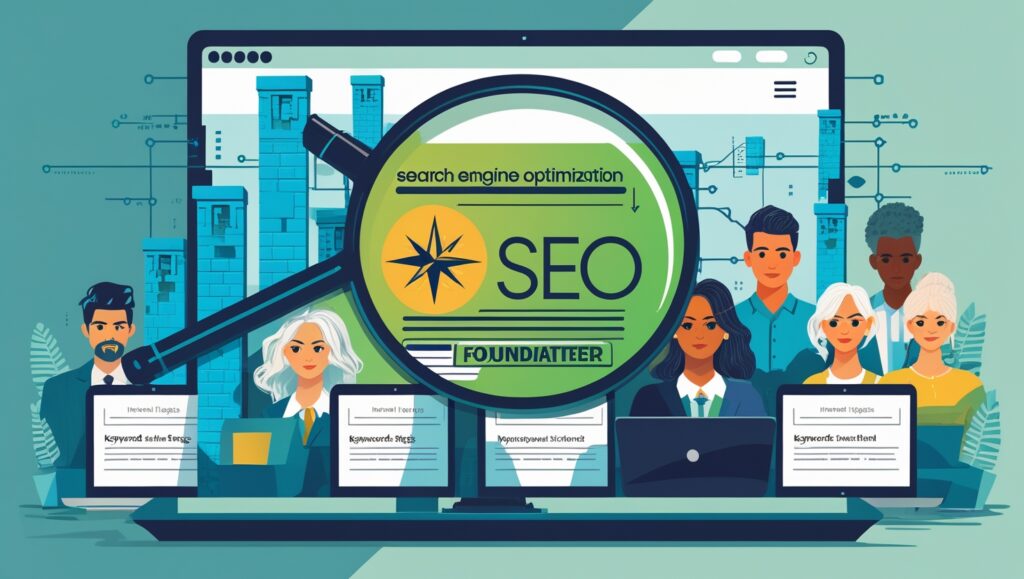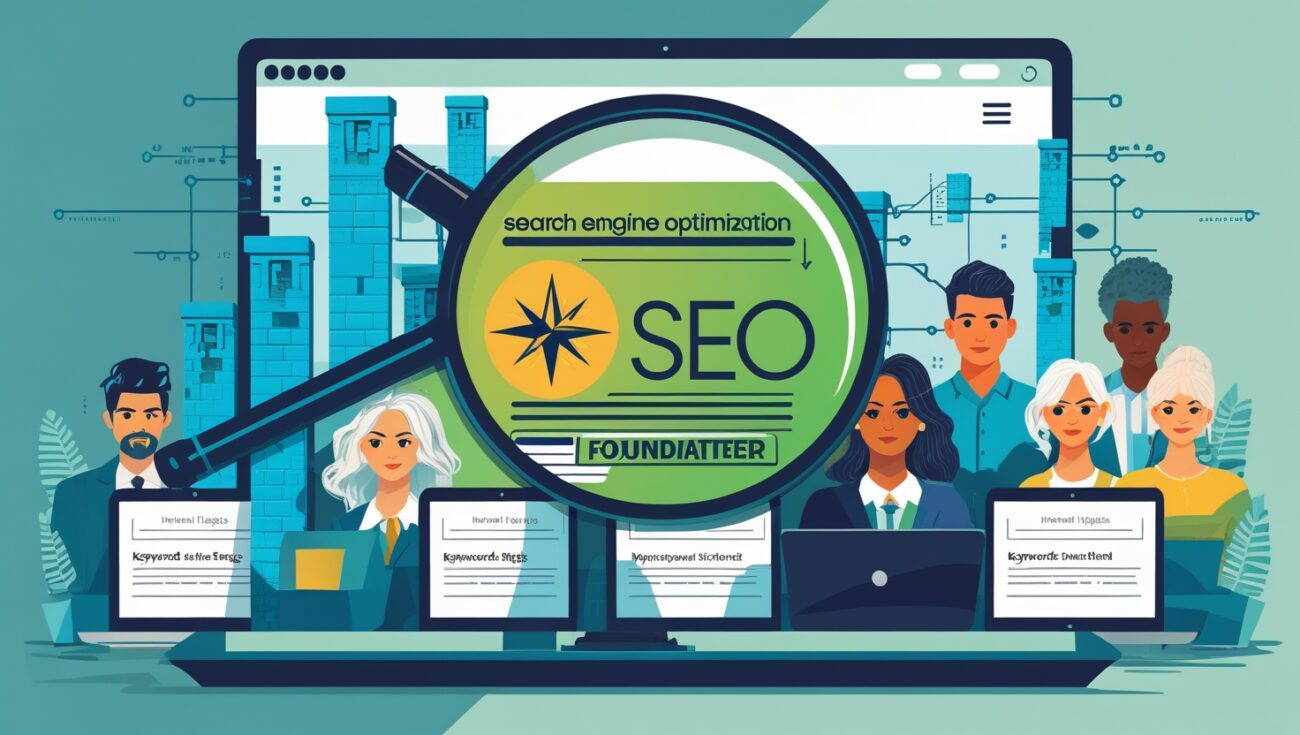How to Build a Strong SEO Foundation with Internal Links
When I first started in SEO, I made the common mistake of focusing on the “roof and paint” before I had a solid foundation. I was spending all my time on external factors like getting backlinks, running social media campaigns, and trying to get my website to look perfect. But my rankings were unstable, my traffic was inconsistent, and I felt like my website was ready to collapse at any moment.

Table of Contents
I’ve since learned that internal linking is the essential, often-overlooked first step in any SEO strategy. It’s the blueprint and the foundation of a successful website. Without a strong foundation, all the other SEO work you do will be unstable. If you’re ready to start building a website that’s strong enough to stand the test of time, this guide is for you.
The Blueprint: Your Website Structure
Before you build a house, you need a blueprint. Your internal linking strategy is the blueprint for your website. It defines the hierarchy of your content, the flow of authority from one page to another, and the user’s journey through your site. A strong foundation starts with a clear plan and a solid website structure that Google loves.
The Foundation: The Three Pillars
A strong foundation for your website is built on three core pillars that are all directly influenced by your internal links.
- Pillar #1: Crawlability. Internal links are the pathways that Google’s crawlers use to find and understand your content. The more links a page has, the more likely a bot is to find it, crawl it, and understand its context. Without a strong network, your most important pages can get lost and buried.
- Pillar #2: Authority Flow. Your website has more authoritative pages and less authoritative pages. Internal links are the pipes that carry “authority juice” (PageRank) from your most powerful pages to your new or less authoritative content. This is a direct way to build the strength of your entire site from the ground up, ensuring that valuable pages don’t get left behind.
- Pillar #3: User Experience. A strong foundation also includes a seamless user experience. A good internal linking strategy guides a user through your site, keeping them engaged, reducing your bounce rate, and telling Google that your website is a high-quality resource that provides a great experience for its users.
The Toolkit: Your Plan of Action
Action 1: Fix the Cracks
The first and most important step to building a strong foundation is to find and fix all of your existing problems. Broken links and orphaned pages are like cracks in your foundation that will eventually lead to a collapse. A tool can find all of your internal linking errors in minutes so you can start fixing them immediately.
Action 2: Lay the Cornerstones
Once you have a clean slate, it’s time to lay your cornerstones. Identify your most important pillar pages and create a logical, interconnected “cluster” around them. This is the core of a strong website structure that will help you rank for your most important keywords.
Action 3: Build a Habit
Building a strong foundation is not a one-time project. It’s an ongoing process of consistent maintenance. You need to consistently audit for new issues and find new internal linking opportunities as your website grows. Ready to automate your internal linking strategy and get the rankings you deserve? Discover how Linkbot can help you.
Your Construction Crew: The Automation Tool
Manually building and maintaining a strong internal linking foundation is nearly impossible on a large site. You need a construction crew to do the heavy lifting for you. A good internal linking automation tool can scan your entire site and provide you with a clear, actionable list of every opportunity and issue, taking the guesswork and manual labor out of the process. Don’t wait. Start building your perfect SEO foundation today.
Conclusion: Start with the Foundation
Building a strong SEO foundation with internal links is the first and most important step to building a high-ranking, successful website. It’s the groundwork that makes all your future SEO efforts, from content creation to backlink acquisition, worthwhile.
My journey taught me that a major mistake is seeing SEO as a mystery. By implementing a smart, corrective approach to my website, I made the mental shift from being a spectator to an active participant in my website’s success. This simple realization took the overwhelm out of SEO and turned it into a series of logical, manageable steps that I could control.
The long-term, compounding effect of fixing these mistakes is what makes it so powerful. Each time you add a thoughtful, relevant link, you are not just performing a task; you are building your website’s authority, one link at a time. These small, consistent improvements add up to a significant competitive advantage over the long term, making your website an increasingly powerful asset.
I can say from personal experience that there is a special kind of satisfaction that comes from seeing a direct correlation between a new link and a ranking boost. It’s the feeling of taking a tangled mess and organizing it into a clean, logical network. The result is a website that just feels better to navigate, for both users and the people managing it.
A clean internal link profile also has a huge impact on your website’s overall trustworthiness and authority. When a user or a search engine bot lands on your page and sees a clear network of interconnected, relevant articles, it signals that you are a serious, comprehensive resource on the topic. This kind of professional organization is exactly what Google looks for.
The most important part of this foundational skill is building a consistent habit of linking. It’s not about a single audit and then forgetting about it. A good website is a living thing, and it needs regular maintenance to ensure your internal links stay clean, which is a key part of long-term SEO success.
I felt like I was finally in the driver’s seat of my SEO. For years, I had relied on external factors, which felt like I was giving up control of my SEO destiny. But by mastering a simple task like building my internal links, I was proactively building my site’s authority from the inside out, on my own terms, which was an empowering and exciting feeling.
By implementing a strategy that serves both SEO and conversions, you are also directly addressing Google’s E-E-A-T framework. You are demonstrating expertise by creating topical clusters, you are showing authority by linking from strong pages, and you are providing a better user experience, which is a key part of what Google looks for in a trustworthy website.
I’ll never forget the first time I applied my new internal link strategy to a page that was struggling to rank, and it shot up in the search results almost overnight. This was my “aha” moment. I realized that a strategic, well-placed link from a high-authority page was far more powerful than I ever thought possible.
One of the greatest benefits I got from using an automated tool to manage my link profile was the “to-do” list it provided. Instead of being overwhelmed by the sheer size of my website, the tool gave me a prioritized, actionable list of fixes to make. It transformed a monumental, frustrating task into a series of manageable steps that I could tackle in just minutes.
It’s crucial to understand the difference between a simple, generic link and one that’s part of a strategic, mapped plan. A simple link is a one-off connection. A link that’s part of a plan is a purposeful part of a larger network, designed to pass authority and guide a user. The latter is far more powerful.
Ultimately, mastering internal linking is a simple but powerful strategy that transforms a website’s foundation. It’s a low-cost, high-impact fix that can instantly improve your site’s health and SEO performance. It’s the kind of foundational SEO work that every website owner should prioritize.
My final piece of advice is to not be intimidated. Don’t worry about the high cost of manual labor; just focus on making your website a better place for your readers. You will be amazed at the progress you make and the results you can achieve.

